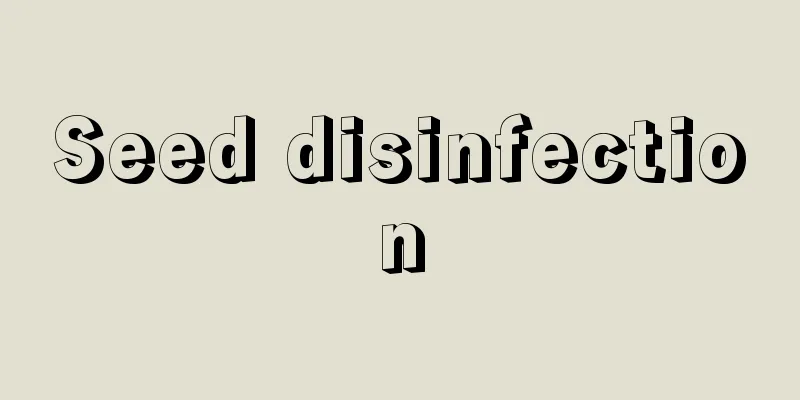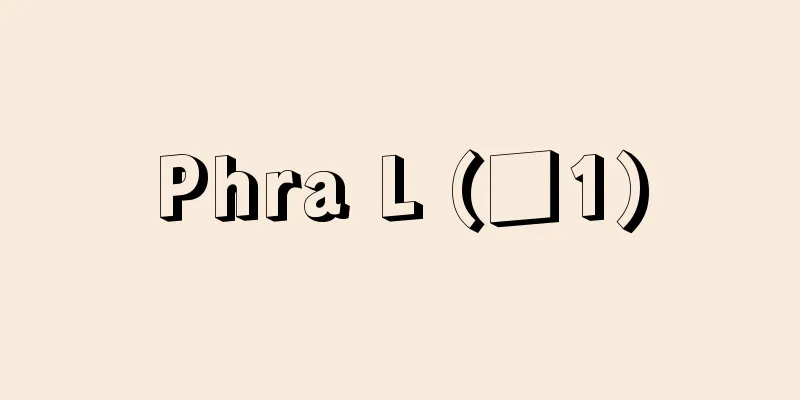Seed disinfection

|
It is a method of preventing diseases in seedlings caused by plant pathogenic microorganisms that are latent in seeds, seed potatoes, bulbs, etc. In some cases, treatment is used to prevent infection by pathogens in the soil after sowing, and this is why seeds are coated with medicines to prevent rice seedling rot and vegetable seedling damping-off. There are two methods of seed disinfection: heat-based and chemical-based. Heat disinfection methods were devised after many years of trial and error to kill only harmful microorganisms without harming the seeds, and were widely used in the days before effective seed disinfectants were available, but have fallen out of use in recent years. There are four heat disinfection methods. The hot water soaking method involves soaking sweet potato seeds in 47-48°C water for 40 minutes to prevent black spot disease in sweet potatoes, and heating rice seeds in 57°C water for 15 minutes to prevent nematode heart disease in rice. The cold water soaking method involves soaking wheat seeds in 15-20°C water for 5-10 hours, then preheating them in 50°C water for 2-3 minutes, then putting them in 54°C water for 5 minutes, before removing them and cooling them in cold water. The bath soaking method involves heating the water to 46°C for wheat and 43°C for barley after a bath, turning off the heat completely, adding the seeds and slightly opening the lid, then taking them out the next morning.The solar heat method involves soaking the barley seeds in water for 4-6 hours, spreading them on a mat, and heating them in direct sunlight for 3-6 hours. Chemical methods used in the past included copper sulfate, formalin, and copper carbonate, and there are also records of soaking in human urine. From around 1937, phenylmercuric acetate and methoxyethylmercuric chloride, which were developed as seed disinfectants, were used, and soaking seeds in an aqueous solution or coating them with a powder of these compounds diluted with talc proved extremely effective, but they have not been used since 1971 due to toxicity issues. Currently, diclon ("Spargon"), thiram (TMTD, "Thiuram", etc.), and a mixture of thiram and benomyl ("Benlate T") are used by soaking and coating, and are extremely effective at disinfecting infected seeds and preventing infection by soil pathogens immediately after germination. The main seed infectious diseases for which these seed disinfectants (seed fungicides) are effective include rice seedling disease, southern leaf blight, and nematode core blight, wheat leaf spot and smut, tomato wilt, dry rot of daffodils, vine splitting and vine blight of melons, sclerotinia disease of Chinese milk vetch, and seedling damping-off of various flowers and vegetables. [Murata Michio] Source: Shogakukan Encyclopedia Nipponica About Encyclopedia Nipponica Information | Legend |
|
種子、種(たね)いも、球根などに潜在する植物病原微生物が原因で発病する種苗の病気の予防手段。播種(はしゅ)後に土中の病原菌で感染するのを防ぐ目的で処置する場合もあり、イネ苗腐(なえぐされ)病や野菜などの苗立枯(なえたちがれ)病の予防のために種子に薬をつけておくのは、このためである。種子消毒の手段としては、熱による方法と薬による方法がある。 熱による方法は、種子に害がなく有害微生物のみを殺すよう長年の試行錯誤の結果案出されたもので、有効な種子消毒剤がなかった時代には広く実行されたが、近年は下火である。熱消毒法には次の4方法がある。温湯浸(おんとうしん)法は、サツマイモ黒斑(こくはん)病予防に種いもを47~48℃の湯に40分間浸漬(しんし)する、イネ線虫芯枯(しんがれ)病予防に種もみを57℃の湯で15分間加熱するなどの処置をいう。冷水温湯浸法は、コムギの種もみを15~20℃の水に5~10時間浸漬後、50℃の湯に2~3分間入れて予熱し、54℃の湯に5分間入れ、取り出して冷水で冷やす処置。風呂湯浸(ふろゆしん)法は、入浴後にコムギの場合は46℃、オオムギは43℃に加温して、火を完全に消し、種もみを入れて蓋(ふた)をすこし透かし、翌朝に取り出す処置。太陽熱利用法は、オオムギ種もみを水に4~6時間浸して莚(むしろ)に広げ、直射日光を3~6時間照射して加熱する処置のことをいう。 薬による方法は、古くは硫酸銅、ホルマリン、炭酸銅などが使われ、人尿に浸漬した記録もある。1937年ころから、種子消毒剤として開発された酢酸フェニル水銀やメトキシエチル塩化水銀が使われ、水溶液へ種子を浸漬したり、これらの化合物をタルクで薄めた粉剤で種子を粉衣(ふんえ)する方法で著しい効果をあげたが、毒性問題のため1971年以後は使われていない。現在は、ジクロン(「スパーゴン」)やチラム(TMTD、「チウラム」など)や、チラムとベノミルの混合剤(「ベンレートT」)が浸漬法や粉衣法で使われ、保菌種子の消毒や発芽直後の土壌病原菌による感染防止に卓効を奏している。 これらの種子消毒剤(種子殺菌剤)が有効な主要種子感染病としては、イネの馬鹿苗(ばかなえ)病、ごま葉枯(はがれ)病、線虫芯枯病、ムギの斑葉(はんよう)病、腥黒穂(なまぐさくろほ)病、トマトの萎凋(いちょう)病、スイセンの乾腐(かんぷ)病、ウリ類のつる割(われ)病・つる枯(がれ)病、レンゲソウの菌核(きんかく)病、各種の草花や野菜の苗立枯病などである。 [村田道雄] 出典 小学館 日本大百科全書(ニッポニカ)日本大百科全書(ニッポニカ)について 情報 | 凡例 |
>>: Dendrite - juushijosho (English spelling) dendrite
Recommend
The gods are thirsty
...This prompted the author to gradually develop ...
abrasion platform
…Below the cliff that retreats due to wave erosio...
Bogor Botanical Gardens - Bogor Botanical Gardens (English name) Kebun Raya Indonesia, Bogor
This botanical garden is located in Bogor, Indone...
King Gwanggaeto
The 19th king of Goguryeo, Korea (reigned 391-412...
Caprifoliaceae
...A few species are cultivated for decorative pu...
khorovod
...Musically, these are indistinguishable from th...
Phosphomolybdate (phosphomolybdate)
A common name for a salt of heteropolyacid made fr...
Urticaceae
…In Andersen's fairy tale "The Prince an...
EEG - EasyEasy
Electroencephalograph : An electroencephalograph. ...
Radio noise - denpazatson (English spelling)
In wireless communications, this refers to irregul...
Thérèse de Lisieux
1873‐97 A French saint and Carmelite nun, her real...
Soseki - Soseki
Year of death: Tenbun 2.4.24 (1533.5.18) Year of b...
Art of the Wei, Jin and Northern and Southern Dynasties
The Wei, Jin, and Northern and Southern Dynasties,...
Bulatovic
Yugoslavian writer. Born in Montenegro, he lost hi...
asura
In Hindu mythology, a kind of demon deity, dedica...









